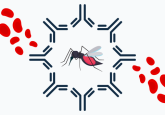Interview with Min Meng on the changing landscape of oligonucleotides in bioanalysis

In this interview, Min Meng (Chongqing Denali Medpharma; Chongqing, China) discusses the changing landscape of oligonucleotides in bioanalysis, including how the industry has changed over the last decade as well as the advantages and disadvantages of different analytical methods.
1Could you please introduce yourself and provide a brief summary of your career to date?
My name is Min Meng, I am currently the CEO of Chongqing Denali Medpharma, Co., Ltd., (Chongqing, China). It is a bioanalytical laboratory specializing in regulated bioanalysis using LC–MS and other advanced analytical technologies. Prior to Denali, I was Technical Director at the Covance Salt Lake City Laboratory (UT, USA) and Laboratory Director at Tandem Labs (UT, USA), a Laboratory Corporation company, involved in method development, method validation and sample analysis for small and large molecules primarily using LC–MS. I have approximately 20 years of experience in the bioanalytical field. I earned my PhD in Biomedicinal Chemistry from the University of Maryland (MD, USA) and my BS and MS degrees from Beijing Normal University (Bejing, China).
2Throughout your time working with oligonucleotides, how has the industry changed?
Around 2005, we received the first request to develop a bioanalytical method to quantify an antisense oligonucleotide using LC–PDA. The lower limit of quantification (LLOQ) was 1µg/mL. Very quickly the second request came through, where we needed to develop a LC–MS/MS assay in order to lower the LLOQ. At that time, the oligonucleotide bioanalysis project was rare and the names of the clients were typically unheard of. Then ten years later, we have developed hundreds of bioanalytical methods and worked with dozens of oligonucleotide pharmaceutical companies. The platforms also branched out from LC–MS/MS to LC–HRMS and hybridization based LC–FD.
Although I was only involved in bioanalysis, which is just a small portion of the new drug development process, from this point of view I have witnessed several major changes and trends in the oligonucleotide pharmaceutical industry, during last the 10 years while working for our clients, including:
- The oligonucleotide pharmaceutical industry is growing rapidly. There was a 15 year gap since the approval of Miravirsen in 1998 to the recent approval of three new oligonucleotide therapeutics approved by the FDA: For example, the antisense oligonucleotide Mipomersen (Sanofi-Genzyme, Paris, France; Isis pharmaceuticals, CA, USA; 2013); the antisense RNA Etepirsen (Sarepta Therapeutics, MA, USA; 2016); and Nusinersen (Biogen MA, USA;Ionis Pharmaceuticals, CA, USA; 2016).
These have boosted the confidence of the researchers and stimulated the financial sector with a new influx of financial investment. Thus, small or medium size oligonucleotide companies have started to build strong pipelines, while larger pharmaceutical companies have been able to get a head start by gaining licenses from these top candidates. The booming oligonucleotide industry is encouraging and more than welcome for bioanalysis from a CRO perspective.
- The demand for selective and sensitive bioanalytical methods is increasing. Currently, there are several analytical technologies utilized in the bioanalysis of oligonucleotides. Mainly hybridization based assays or liquid chromatography based assays. Although the hybridization based assays such as RT–qPCR or ELISA have the best sensitivity, they cannot distinguish the full length oligonucleotide and its metabolites. Thus, people turn their interest to liquid chromatography based techniques, such as LC–MS/MS, LC–HRAM and LC–FD.
In comparison, these technologies possess the advantages of wide dynamic range, high selectivity and specificity. However, they still cannot reach the desirable LLOQ as a hybridization assay. In terms of the sensitivity, there is approximately a 10–50 fold difference between hybridization and chromatography based assays. In summary, each technology has its own pros and cons. So far, there is no single universal analytical solution to provide satisfying sensitivity and specificity simultaneously for new oligonucleotide therapeutic drug development. Quite often our sponsors are torn by the options and are forced to make a compromised decision among the available analytical technologies for different purposes.
- The complexity of the formulation has increased. Ten years ago, most of the oligonucleotide therapeutics were single-strand antisense oligonucleotides (ASOs) with some structural modification, such as phosophorothoiate (backbone modification) or 2’-flouro oligonucleotide (ribose modification). Later on, double stranded siRNA alone or formulated with ionic or phospholipids (liposome formulation) became popular. In more recent years, the oligonucleotides, either ASO or siRNA linked with carbohydrate moiety such as N-acetylgalactosamine (GalNAc) have been reported. Out of these, it is not uncommon to have two or three siRNAs in one formulation. All these modifications are designed to increase stability, bioavailability and thus improve the overall potency of oligonucleotide therapeutics.
3Why do you think there is such a large need for oligonucleotide analysis in China?
The main reason I moved back to China is due to recent China Food and Drug Administration (CFDA) requirements for conducting bioequivalence of the marketed generic drugs. Since the majority of these are small molecule drugs, I thought that I would not work on bioanalysis for oligonucleotides, at least in the near future. To my surprise, there are at least more than ten public or private pharmaceutical companies focusing on the development of oligonucleotide therapeutics. A noticeable phenomenon is that most of them have ties with US pharmaceutical companies such as; Ionis (CA, USA), Alnylam (MA, USA), Quark (CA, USA) and Sirnaomics (MD, USA). The US companies were able to gain access of the well trained and relatively cheaper scientific staff via joint ventures, such as sole subsidiary, strategic partners or licensing.
Chinese researchers are active in many international conferences and produce high-quality publications. There are several regional or national conferences, such as Asia Tides and RNAi China, drawing in a lot of Chinese professionals. With my accomplishments in oligonucleotide bioanalysis in the US, it is no surprise that these companies have followed the news of my return. I have recently met with a Vice President of a top Chinese oligonucleotide pharmaceutical company. She told me that they could not find any bioanalytical lab that could provide the right service. Apparently, there is big void for a qualified bioanalytical lab that can provide bioanalytical service, regardless of hybridization based assays or liquid chromatography based assays.
4Could you briefly describe the methods used for oligonucleotide analysis that will be used in your lab?
If we were to be involved in the oligonucleotide bioanalysis business, we would focus on chromatography based technologies initially. For our clients, we would have to equip the lab with the following four different platforms:
- LC–PDA. It is good for a tissue distribution study. The typical LLOQ is relatively high (~1µg/mL) and we can obtain metabolite information.
- LC–MS/MS. Its typical LLOQ is ~10ng/mL. It is high throughput, selective and good for animal and human PK assays.
- LC–FD. Its typical LLOQ is ~1ng/mL. It is good for animal and human PK assays. However, its throughput is low (cycle time is typically 15–20 minutes).
- LC–HRMS. It has the same advantages of traditional triple quadruple MS. Additionally, the high resolution allows us to perform metabolite identification and data mining.
5In your opinion, what do you think is the best method for analysing oligonucleotides?
Based on my experience, there is still no one-for-all analytical method for analyzing oligonucleotides yet. Personally, it is ideal to have the above four analytical platforms in one lab. However, if I am told that I can only choose one instrument it has to be LC–HRMS since it can do quantitative analysis and metabolite elucidation.
6Is there any legislation you would change to improve scientific progression in your field?
I have worked in regulated bioanalysis for nearly 20 years now, during this time I have found the bar is moving higher and higher. Taking method validation as an example, more and more tests are required, e.g., hyperlipidemia, hemolysis, recovery, matrix effect, solution stability for highest (stock) and the lowest (standard one). Though it is great to obtain more information, some experiments do not improve the method rather they increase operational cost. Decades ago, as a project manager who has a technical background, I often defended the data and made bold decisions.
In recent years, we operate under the standard operating practices, literally word by word. No one wants to take the responsibility to think scientifically.
Future
7What are your predictions for the future of oligonucleotide analysis?
Frankly, it is up to oligonucleotide companies. If the pipelines are strong, the future of the oligonucleotide analysis is bright.
8Do you think more oligonucleotide analysis will be outsourced to companies in China in the future?
Definitely. The overall cost conducting toxicology studies or clinical trials are still cheaper in China. We were already approached by US and domestic companies for our bioanalytical capacity. The key to ramp up the business is to purchase instruments and train scientists.





